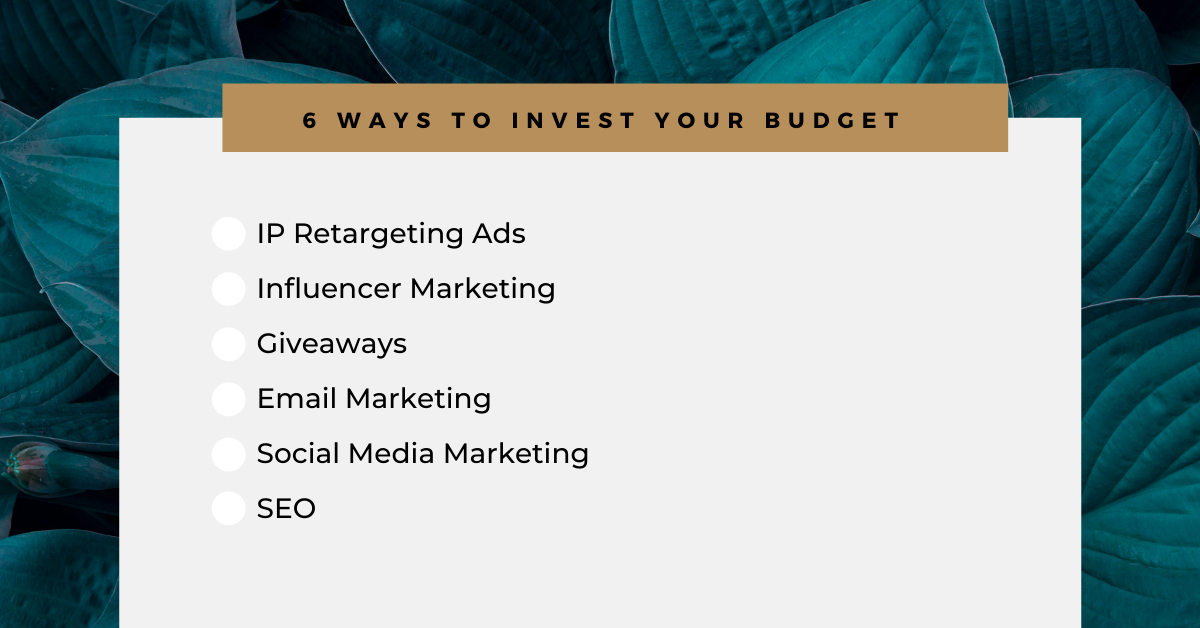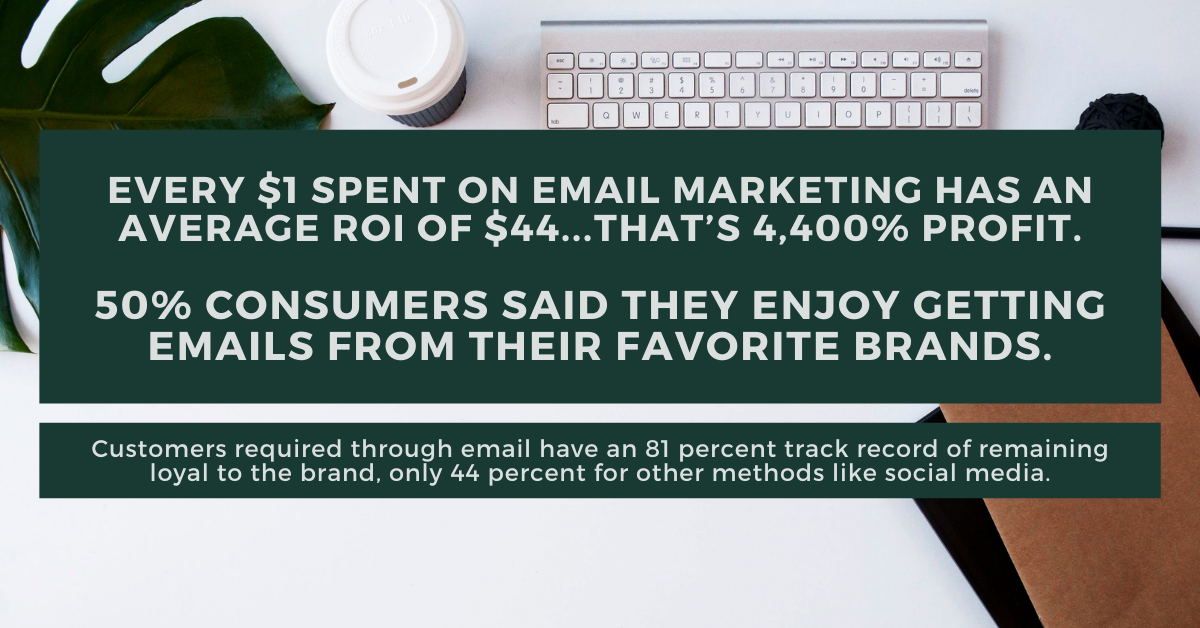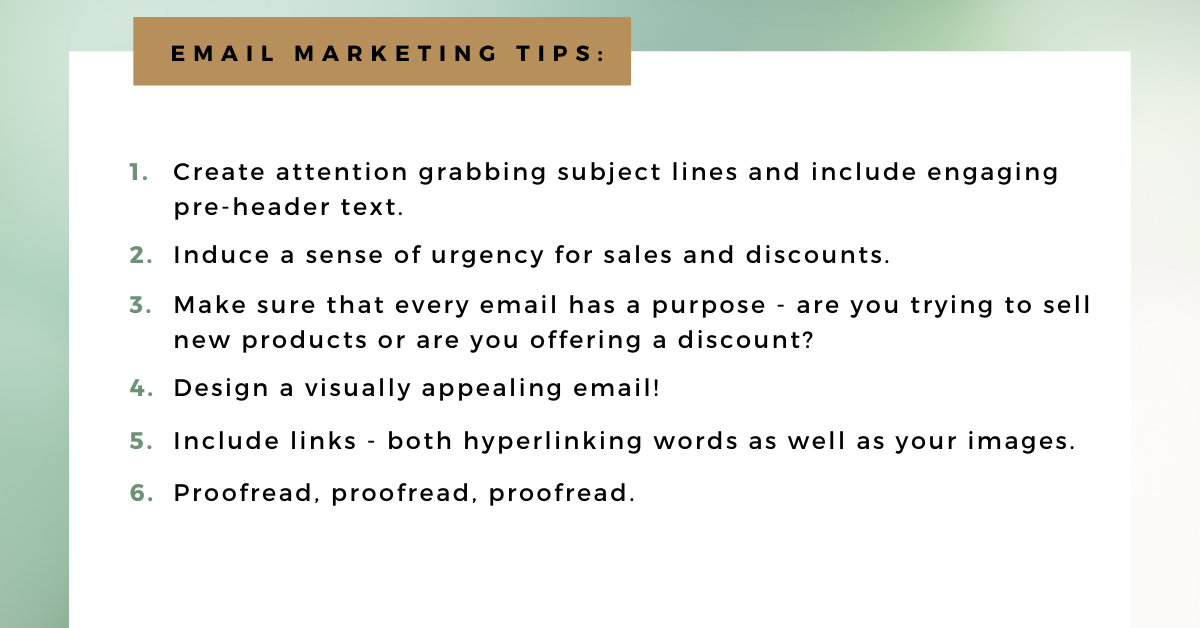It’s hard to believe it, but this whirlwind of a year is nearly over. There is just over a month left until we have to start thinking about a new marketing plan and putting the final touches on a marketing budget for 2021.
Now, if you’re anything like the majority of businesses at the moment, you may have found that a lot of your digital marketing budget “went to waste” in 2020. You may not have been able to advertise your product or service because no one would make purchases due to the financial burden of the pandemic. And if people aren’t buying, you simply aren’t able to risk losing revenue on marketing.
With all that said, I’m here to tell you this: DO NOT let your marketing budget just sit there. You either use it, or you lose it.
If you’re completely clueless on how to use it up before year’s end, you won’t be after reading these suggestions:
- IP Retargeting Ads
If you’re trying to bring website visitors back after they’ve bounced, this is the way to do it. IP retargeting often results in a positive return on investment (or in this case return on ad spend), so it’s worth it to throw some of your budget at this as it gets people back in your sales funnel.
To start, you’ll have to have a pixel installed on your website. From there, you can begin creating ads that focus on bringing people back to your website to complete a conversion, whether that’s buying a product, downloading an incentive, or filling out a form. These can be specific to a target audience and will appear only AFTER they have visited your site.
- Influencer Marketing
Gone are the days when big-name celebrities were the only ones promoting brands. Now, with platforms such as Instagram and TikTok, influencer marketing has become a lane of its own. If you aren’t aware, there are three types of social media influencers you need to know: macro-influencers, micro-influencers, and brand ambassadors.
Each of these sets of influencers can be great to work with. The goal is to gain more brand exposure by working with someone who can spread the word to their hundreds, thousands, or even millions of followers. However, let’s keep one thing in mind:
More followers = More expense.
While you might be aiming to work with macro or even micro-influencers, keep in mind that they may cost you more than you expect. Rates vary from person to person, so also remember not to rule out negotiation; you may get to work with an influencer who won’t break the bank.
Also, if you’re new to the influencer marketing space and are hoping to spend the rest of your budget in this area, remember to choose your influencers wisely. A lot of influencers might love to work with your company and might even be reasonably priced, however, they need to be the right fit for your brand.
If you own a barbecue restaurant, targeting people who don’t eat meat probably won’t be your best option. Choose influencers you know would be excited to work with you.
- Giveaways
Who doesn’t like free stuff? Giveaways are one of the best ways to not only increase your follower count, but also get your product (or service) in front of people who may not have purchased from you otherwise.
Classic giveaways usually go like this: You announce a giveaway on your preferred social media platform, tell your audience to like your post, and also tell them to tag someone in the comments. Keep in mind that asking them to like your post and comment is how they can actually enter the giveaway (you can choose from random likes and comments in order to pick your winner(s).
A few things happen here: When they like your post, it’s instant engagement. The same thing happens when they comment on your post, except they are ALSO exposing other people to your brand when they are tagging their friends. It is one of the best ways to build brand awareness.
Going back to influencers, you can work alongside an influencer so that they can be the ones who initially announce the giveaway on their social media accounts. For example, if you do this via Instagram, they may say in a post, “I’m working with brand XYZ to do a giveaway! Make sure to like this post and follow XYZ’s page for the rules.” This way, you get double the brand exposure.
- Email Marketing
Could your email marketing campaign use a revamp? Now’s the time to put the rest of your budget to use. Investing in a new email marketing platform is one way you could go. You could also improve the design of your emails if things need to be updated.
You might also consider growing your list if you simply don’t have enough emails to start with. Of course, do this wisely and stick with your target audience.
- Social Media Marketing
Are you struggling to post consistently on each of your social media channels? Do you want to boost your follower count? Whatever the case may be, consider spending your budget on your social media marketing strategy.
For example, you might want to invest in a marketing tool that can help you get your posts scheduled and ready to go ahead of time. This form of marketing automation can save you the headache of posting content the day of, which can end up being extremely time-consuming.
You also might want to spend your money boosting your posts on platforms like Facebook. You can choose different objectives for these posts, such as getting website traffic, brand awareness, engagement, and more.
- SEO
Search engine optimization (or SEO) is one of the most important things you need to keep in mind as a business owner, so if this hasn’t been on your list, it’s time to include this in your budget. A big part of doing this is making updates to your website.
For example, if you want to reduce your bounce rate, consider adding some incentives to your site. These would, of course, cost you time and money, but would be free for the consumer. It might be an ebook, a free course, or simply a percentage off of their first order. Do what you think aligns with your online marketing goals.
Also, remember to update each page of your website with strong keywords, as well as updated graphic design elements. Make sure that everything works on your site and that there aren’t delays in certain areas, such as a long loading time.
 How will you use up the rest of your budget?
How will you use up the rest of your budget?
There are a lot of options to consider, whether you’re a small business owner or the owner of a large franchise. Just don’t let your budget sit there until it expires. Do something with it!
Read More





















